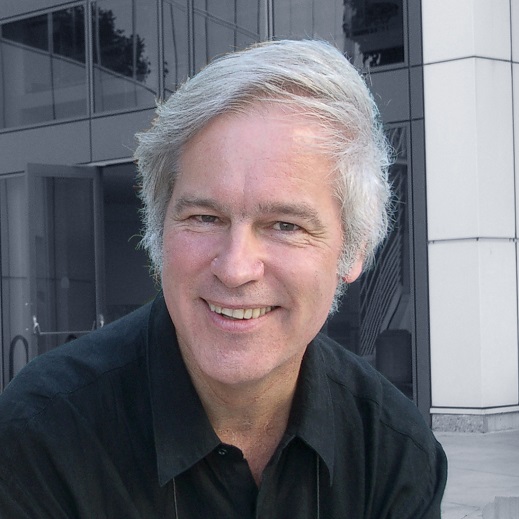The Science Behind the Art of Color
Charles Poynton, PhD is legendary color scientist, video engineer and CSI Fellow. He is the author of two influential books on the science of color in digital video, and frequently speaks and teaches on the subject. In the 1980s, he designed and built innovative digital video processing systems for NASA’s Johnson Space Center. He also helped to develop standards used in digital cinema, cameras and displays. However, Poynton may be best known as the “inventor” of the number 1080…at least in terms of its use as the standard pixel height for high definition video. Were in not for his insight, the world today would be…or at least look…very different.

Charles Poynton recently spoke with CSI about his life and career.
CSI: Why 1080?
Charles Poynton: It’s simple. 1920 times 9, divided by 16 equals 1080. The number 1920 for pixel width had already been agreed upon and had solid roots in engineering, but the number for pixel height was, strangely, uncertain. Sony and NHK preferred 1035, but that would have led to non-square pixels. They were perfectly fine with that because, at that time—and this was 25 years ago—they didn't appreciate the pervasive nature of computing. But anyone engaged in computing knew that it was a mistake. I spent a year of my life working to fix that problem.
CSI: Inventing 1080 and building computers for NASA are big accomplishments.
CP: The other thing I’m proud of is earning a PhD later in life. My PhD was conferred two years ago. My doctoral work concerned the translation of color into digital media.
CSI: Could you expand on that?
CP: When you look deeply into making movies or digital video, you realize the goal is not to reproduce the colors that are in front of the camera, but to reproduce them as they are supposed to look. Pictures aren’t taken, they’re made. In a documentary, the director and DOP don’t have much flexibility to make alterations. They have a philosophical obligation to stay true to what’s in front of the camera without imposing too much “art.” Things are much more fluid in fiction. Colorists understand this and adjust their approach to the philosophical goals of the project. My PhD thesis looks at those tasks and the math that allows colorists to accomplish them in a sensible, straightforward way.
CSI: That’s fascinating.
CP: It was a lot of fun. It was an interdisciplinary PhD because it bridged hard science—physics and math—with movie-making, and a certain amount of psychology. CSI members might appreciate it, but if a PhD thesis sounds too heavy, I suggest they go straight to chapter five. It’s more approachable.
CSI: How did you get involved in CSI?
CP: CSI was formed about the time the second edition of my book, Digital Video and HD: Algorithms and Interfaces, was published. The founders of CSI were familiar with the book, which had a lot of math and a tiny bit on the philosophy of digital video. I was also doing a lot of teaching at the time, and many CSI members attended my courses and seminars. So, that’s how we got connected.
CSI: You taught science to colorists?
CP: I liked teaching and I challenged myself to teach, not just programmers and engineers, but also artists and craftspeople. So, I began teaching courses, seminars and workshops stressing the art. I even taught cinematographers, which was a big challenge, because, unlike colorists, they don’t get the math quickly. I had to learn to teach it in a way that’s approachable. The late Richard Feynman once said, "If you can't explain it to your grandmother, you don't know how it works." I took inspiration from that in teaching cinematographers. For example, cinematographers today often shoot in log mode, which means shooting logarithms. But, what is it about logarithms? It’s a bit of a leap for them because they didn’t study calculus. So, I work hard to explain those concepts in a language that they understand.
CSI: How do you see the role of colorist evolving?
CP: Colorists need to learn how to balance art, craft and science. All three are challenging. The science is becoming more complicated, so colorists need to keep learning about tech. The tools are changing and that makes a big difference in how material is delivered to colorists. The craft is changing too. There are a lot of new deliverables and colorists must consider how material will look on different devices, in different viewing conditions and different picture sizes. In terms of art, there is the ongoing challenge of accommodating the DOP’s vision and acting as custodian of image quality all the way through the chain.
Colorists have a really important role in pre-production. Cinematographers will often perform camera tests as a basis for choosing cameras and lenses, but pre-production should be more than that. Colorists should be connected to that process because they are in a position to make informed choices about how camera material is ingested at the front end of post-production.
CSI: What technological developments do see coming that are going to have the biggest impact on colorists and the industry generally?
CP: Colorists and the post-production community should think about what’s coming next, but it’s increasingly challenging. Many of us grew up in a world where studio, production and acquisition technology was the driver. Consumer technology was at the other end of the chain. Now, the reverse is true. Consumer devices are driving production technology. Strangely, broadcast technology is at the rear. It used to be the locomotive, now it’s the caboose. It’s been reduced to a one foot cube bolted to the last hitch. Colorists ought to be aware of this and work through CSI to have a voice in technological development on the acquisition and presentation sides. Our goal is not to turn out content like a sausage factory, but to produce quality programs.
